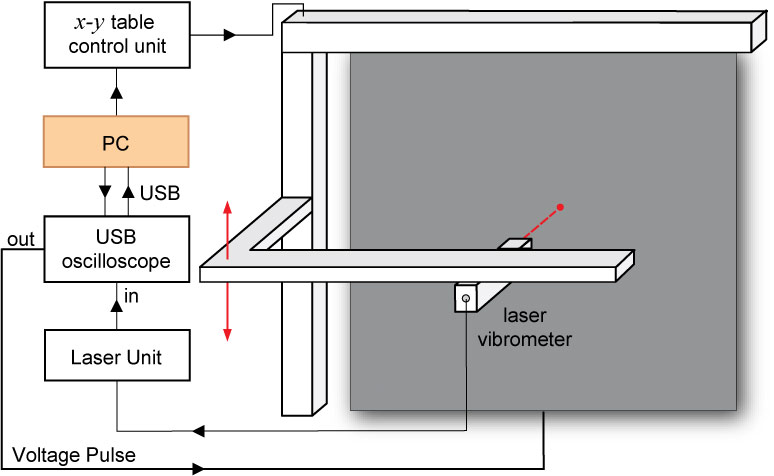Experiments
Along with extensive computer simulation of guided wave excitation and propagation in various layered elastic solids our team does not forget about experimental investigations of the phenomenon. This work is performed in the context of international collaboration with research groups from Germany (Institute of Mechanics, Helmut-Schmidt University, Hamburg and Working Group in Technical Mechanics, University of Siegen, Siegen) and USA (Laboratory for Active Materials and Smart Structures, University of South Carolina, Columbia).
Laser vibrometry is a convenient contactless tool for measuring the oscillations on surfaces of elastic bodies, employing the Doppler frequency shift of coherent laser light. It is well established in experimental modal analysis, and it is also widely used for the observation and investigation of elastic guided waves. The laser vibrometer has a good spatial resolution and does not need any couplant. Sketches of experimental setups available by Hamburg and Siegen teams are schematically shown below:


